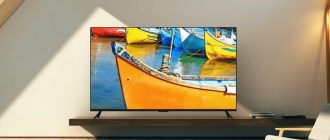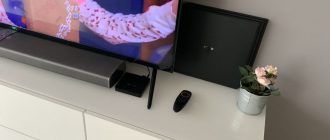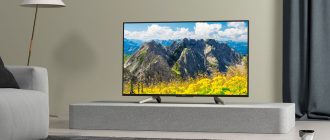A good TV is, first of all, reliable and high quality. Next in importance is picture quality, brightness, surround sound, the latest operating system for fast smart TV. We decided to choose the best models based on test results and expert opinion. We rated 55-inch TVs in 2020 and 2021. In the TOP 13 devices. The testing was assisted by Evgeny Pavlov, a repairman of household appliances "VsePochinim".
TV is no longer just a means of viewing news and weather forecasts. It is now an essential media center for home entertainment and recreation. You can truly enjoy your favorite games, movies, TV series or YouTube channels only on TVs with a screen diagonal of 55 inches. Only 4K TVs will be considered as representatives of the most modern format.
Modern television panels are many times ahead of their predecessors on CRT in terms of manufacturability. HDR, OLED, QLED, DTS, Nano Cell - it's easy to get confused in names and terms even for a person who is keen on technology, let alone an unprepared buyer who just wants to buy a good TV. What do these abbreviations and concepts mean?
Which TV should you buy?
According to the dynamic range, television panels are divided into:
- SDR... Standard. Brightness and contrast are limited due to imperfect electronic systems responsible for information processing;
- HDR... High. High dynamic range, the image resembles the real picture as much as possible, light and dark areas of the screen are saturated with details that cannot be reproduced by SDR. Better to buy TVs with HDR.
The basic concepts associated with dynamic range are as follows:
- Brightness... The white hue limit displayed by the panel. Changes in Cd / m2 or (nit). A good indicator is considered brightness from 300 nits .;
- Contrast... The difference between the lightest and darkest areas of the display. Contrast is directly related to detail, picture clarity, black saturation;
- Color rendering... The number of halftones and tones displayed by the device. Measured in bits. Most inexpensive TVs are 8 bit + FRC now. If you are buying a 10-bit TV this is a very good choice;
- Local dimming... The technology allows LEDs to be activated on a specific area, which makes dark colors richer. The function is good, but if the Edge LED TV looks like it's not very aesthetically pleasing. Better when the backlight is Direct LED. Read more about backlighting below;
- Metadata... By processing metadata, the device better displays scenes from a particular movie or show.
HDR benefits
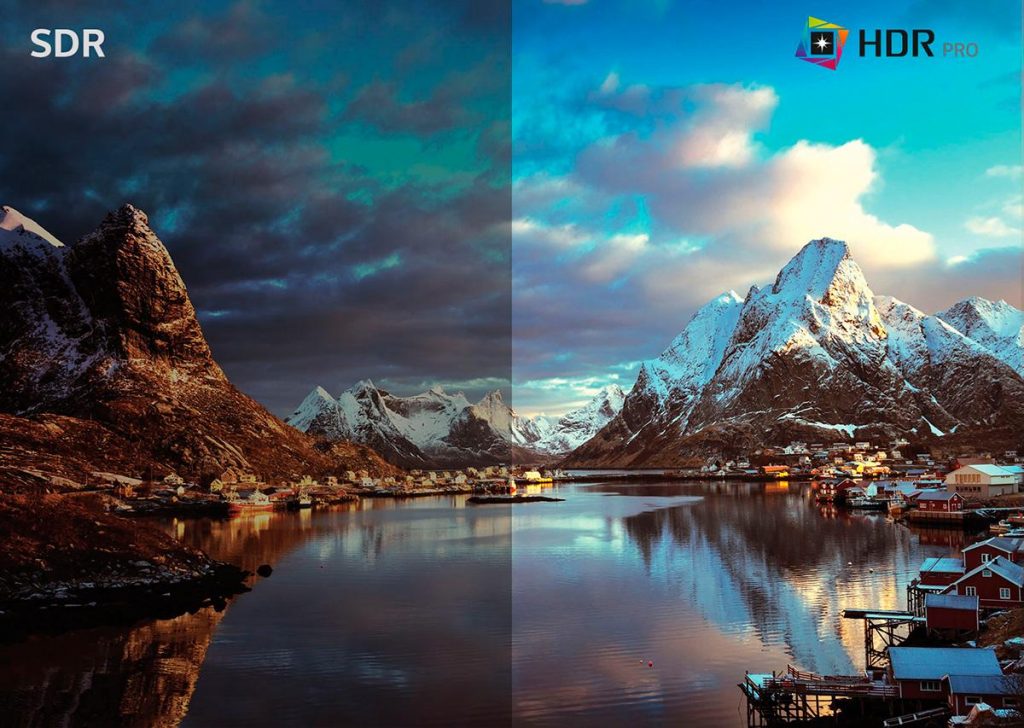
When choosing between SDR and HDR, it is worth choosing the second option. The television image is almost 100% identical to the real picture, repeats the director's, cameraman's intention, looks natural and beautiful. Almost all modern TVs, especially those with 4K resolution, are HDR-compliant, equipped with an 8-bit matrix, local illumination, are distinguished by a maximum brightness of 1000 nits and a high contrast ratio.
OLED matrices: is it worth buying?
OLED is a development of standard liquid crystal LCD matrices. The devices are distinguished by the depth of the black shade, the highest viewing angles, compact bodies, and the absence of overexposed areas. OLED doesn't need LEDs, pixels are light sources by themselves. The OLED picture looks more natural and contrasty.
The main disadvantage of OLED, in addition to the much higher price in comparison with LCD, is pixel burnout. They are especially vulnerable to static images.Companies are trying to tackle the problem by implementing pixel displacement and regeneration techniques, but they have not yet been completely resolved.
Nano Cell: TV features

Nano Cell is a technology introduced by the South Korean concern LG to improve the quality of LED TV panels. Its name is the smallest particles of a substance sprayed onto the screen. This substance blocks dull shades, adds juiciness, brightness and purity to the picture. But this is not OLED at all, it's just a light filter on an IPS matrix. And the IPS matrix itself is darker than the VA. Perhaps on such a matrix in dark scenes there will be a little less detail. In general, be sure to look at this live TV in the store.
Also, the Nano Cell has the following advantages:
- Supports local matrix backlight and HDR technology;
- Increased viewing angles;
- Automatic shade adjustment for maximum realism.
Features of QLED technology
Samsung's QLED technology is based on quantum dots. Its main advantage over other solutions is brightness, due to the brightness, the image looks richer and more contrast. QLED is the development of OLED, Samsung engineers managed to cope with its main drawback, pixel burnout, the picture retains its original vibrancy throughout the entire life of the panel, does not fade.
Crystal UHD: what is it?
Crystal UHD is a publicity stunt from Samsung. The concept was introduced in 2020, bringing together TVs equipped with standard LCD panels, rather than advanced QLED displays. Such matrices have a color depth of 6 or 8 bits, artificial HDR technology is implemented due to the rapid activation and deactivation of backlight LEDs.
In fact, Crystal UHD devices are identical to counterparts from the regular UHD line and the previous Premium TV family, there is nothing innovative about them.
Screen backlight types
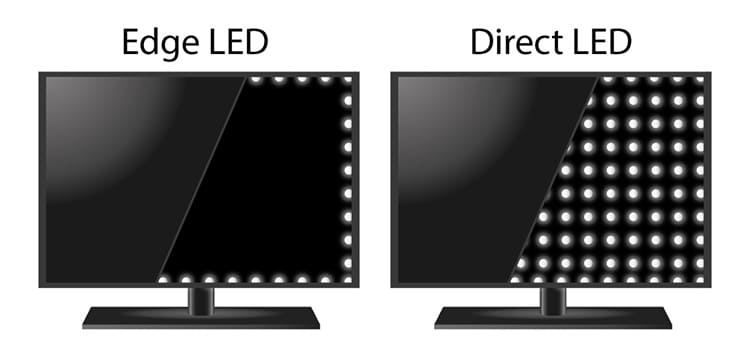
The pixels of a liquid crystal matrix do not emit light by themselves; they need LEDs to display a picture. Their location corresponds to one of two schemes:
- Direct LED... The LEDs are located directly behind the matrix. This arrangement excludes the formation of overexposed areas, provides high performance in brightness and contrast. Cons - the need to increase the thickness of the case and decent power consumption. Development of Direct LED - FALD, there are more diodes in this circuit, the possibility of their partial disconnection is implemented, so that dark tones look more saturated;
- Edge LED... Diodes are located around the perimeter, emitting light onto a reflective substrate. This allows the panel to be thin and compact, but does not exclude the formation of overexposed areas, which is especially noticeable on budget TVs.
TV frame refresh rate

The refresh rate determines the limit on the number of frames shown per second. The standard value for television broadcast is 50, for films - 24. For greater smoothness, TVs often use the interpolation technique, which involves the "completion" of intermediate frames. However, interpolation is not always a blessing, many people do not like excessive smoothness, and an increase in the processor load is often associated with the appearance of graphic artifacts.
Typical values for modern panels are 50/60 Hz, better when 100/120 Hz. If the TV is used to connect a set-top box or a PC, for games, you should pay attention to the increased frequency of 200 Hz, where the difference is really noticeable.
We have already covered:
DTS and Dolby: What's the Difference?
When watching a movie, good sound is just as important as the picture. Both technologies support 6-channel surround sound, the difference is in the bitrate. Dolby has 640 kilobits per second, DTS has 1.5 megabits.However, it is not necessary to immediately assume that DTS provides more detail, the developers of Dolby claim that they have more advanced compression algorithms and the sound is quite comparable to DTS.
The development of these technologies - DTS: X and Dolby Atmos, which implemented 8-channel sound and accurate reproduction of unusual effects, the whistle of bullets, flying aircraft.
Ports
The main switching port is HDMI, and version 1.4 is not enough, you need version 2.0, capable of transmitting video in 4K format at 60 frames. The optimal scheme is 2-3 ports located at the end, this is the most convenient.
To connect a flash memory or an external hard disk drive, you will need a USB 3.0 port, the bandwidth of which is enough to display 4K movies. An optical port is needed for switching with sound systems, subwoofers, panels. An alternative to the optical port is the classic 3.5 or RCA jack. Wireless technologies are implemented by Wi-Fi and Bluetooth cards, which allow you to connect to the Internet or establish synchronization with input devices, mouse, keyboard.
TV rating 55 inches price-quality
QLED Samsung QE55Q700TAU 55 ″ (2020)

The best 55-inch 8K TV on the market right now Samsung QE55Q700TAU 2020 model year. The device has 33 million pixels, which allows you to get an image of incredible detail. Samsung understands that 8K content is still quite small, so the TV has a Quantum 8K processor, which has a developed artificial intelligence system that upscales any transmissions, films or videos from FullHD or 4K to 8K resolution. There is Object Tracking Sound + technology, which monitors what is happening on the screen, creating an immersive three-dimensional sound.
Features:
- processor for upscale images;
- 8K resolution;
- active speech amplifier
- unique surround sound;
- frameless design on 4 sides;
- Ultra Black technology;
- Dolby 5.1 Decoder;
- Sound following an object on the screen;
- Speaker power 60 W;
- local backlight technology;
- adaptive picture setting depending on the environment;
- adaptive connection of compatible soundbars.
QLED Samsung The Serif QE55LS01TAU 55 ″ (2020)
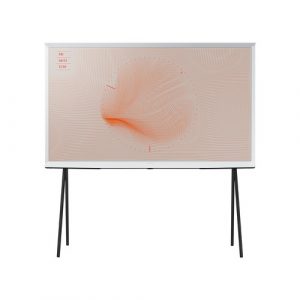
The next in the ranking was Samsung's 4K TV. It has a native resolution of 3840x2160, a range of more than a billion colors, and automatic upscaling up to 4K using a special neural network. The TV works well for game consoles. There is a Real Game Enhancer + mode, which reduces frame time, increases picture smoothness and practically removes Input Lag. Thanks to matrix technology, there is no distortion of colors and TV images when viewed from any angle. Similar to the previous model in the ranking, there are technologies for creating surround sound.
Features:
- maximum viewing angles;
- over a billion colors;
- Game Mode;
- automatic improvement of the quality of any picture.
Sony KD-55XH9505 54.6 ″ (2020)
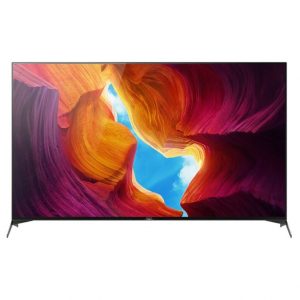
Sony's flagship 55-inch 4K TV is the KD-55XH, which is the conceptual successor to the previous generation. Now it has full-matrix backlighting, which greatly improves picture quality. The slightly outdated X1 Ultimate processor is responsible for performance and image processing. Due to proprietary Sony technologies, there is no drop in picture quality when viewed from any viewing angles. Sony TVs are prepared for streaming movies: there is a special Netflix mode, in which the colors are selected according to the recommendations of the "serial giant".
Features:
- IMAX sound;
- preparedness for watching streaming movies;
- OS based on Android Pie;
- full-matrix backlighting.
OLED LG OLED55CXR 55 ″ (2020)
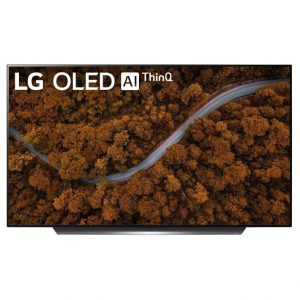
OLED55CXR became the first representative of LG in the ranking. It is one of the Korean corporation's innovative TVs in the 2020 lineup. 4K native resolution, OLED matrix technology. OLED delivers fantastic color vividness and picture clarity. A special OS is preinstalled on the TV, allowing it to be used as a full-fledged working tool. Built-in Dolby Atmos technology to create the perfect sound. For gamers, there is a dedicated mode that supports G-Sync technology, which minimizes PC latency, and ALLM for consoles.
Features:
- OLED matrix technology;
- game mode with low latency and high smoothness of the picture;
- surround sound due to Dolby Atmos technology.
NanoCell LG 55NANO906 55 ″
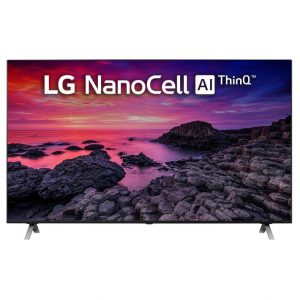
The rating continues to be an innovative TV from LG, which operates on a unique matrix based on nano-particles. Due to this, it turns out to achieve almost perfect color reproduction due to the absence of "dirty" shades. The α7 Gen 3 4K Processor is responsible for enhancing picture and sound quality. The TV is ideal for creating a home theater. There is a cinema mode that processes the image to preserve the colors and details of the authors. Thanks to the matrix technology, it turned out to achieve good lightening of dark areas when using HDR. The TV is also suitable for gamers due to its low input lag and high picture quality.
Features:
- unique matrix technology;
- good picture and sound quality;
- movie mode for watching any movies.
QLED TCL 55C717 55 ″ (2020)
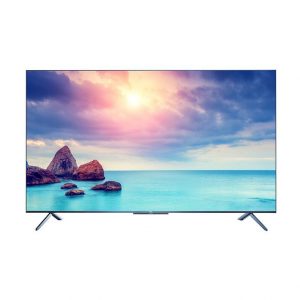
Next up was a fairly budget 4K TV from TCL. Despite its modest price, it delivers high image quality with crisp detail. At the heart of the TV is an IPQ processor that supports many technologies, such as: Dolby Atmos, HDR10 +, Dolby Vision. The TV differs from devices with a similar price by almost complete absence of bezels. SmartTV runs on the Android operating system. There is a voice control system that allows you to control any TV functions through a proprietary remote control.
Features:
- profitable price;
- good image quality;
- support for technologies from Dolby.
QLED Xiaomi Mi TV 5 55 Pro 55 ″
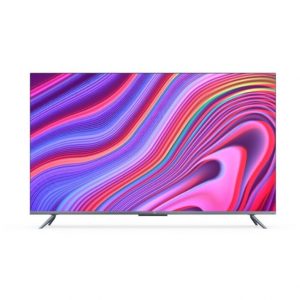
Another Chinese TV in the ranking was a representative of Xiaomi. The device has a QLED matrix manufactured by Samsung. Due to the use of large-scale Korean developments, it turned out to achieve minimal picture frames, support for the HDR10 + standard, MEMC interpolation. The TV processor supports picture decoding up to 8K. Xiaomi's SmartTV can now be a remote control for the smart home system of its own production. The OS itself runs on Android 9.0. The TV has a fairly high response time, which can be quite noticeable in games.
Features:
- advanced matrix;
- high image quality;
- well-developed operating system.
QLED Samsung QE55Q60TAU 55 ″ (2020)

The mid-budget Samsung QE55Q60TAU is well suited for gamers. The TV runs on a VA matrix, which brightens well the dark areas of the picture and has a low response delay. The device can display over a billion different colors. To improve the gaming experience, there is a special mode that further reduces Input Lag and increases the smoothness of the picture. The TV can be paired with a phone in a couple of taps to broadcast pictures and files directly to the big screen.There is an opportunity to control all devices connected to the TV directly from one "smart" remote control.
Features:
- affordable price;
- good picture and sound quality;
- readiness for computer games.
Samsung UE55TU8570U 55 ″ (2020)
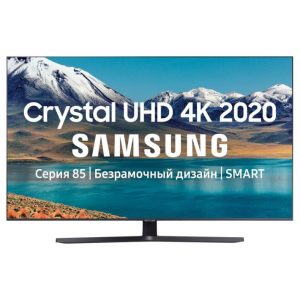
A more budgetary representative of the TV Samsung TU8570 differs from the "older" models in a relatively modest screen, supporting almost all modern technologies. The TV has support for DualLED technology, which improves the quality of realistic video. Dual backlighting allows for even more detail in 4K. The TU8570 supports HDR10 + as well as Dolby Vision. The TV runs on the Tizen 5.5 operating system, which allows you to turn the TV into a control center for other multimedia devices, as well as launch any applications with lightning speed.
Features:
- high image quality due to Dual LED technology;
- fast and efficient operating system;
- low cost.
KD-55XG7005 54.6 ″ (2019)
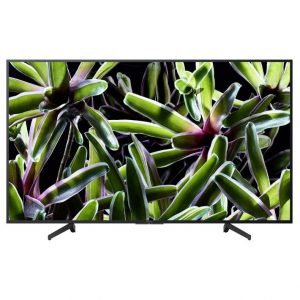
The XG70 is the starter model of Sony 4K TVs. Even last year's model of the Japanese corporation can be a good acquisition due to its characteristics. The TV works on the basis of IPS-matrix with proprietary technology Sony Triluminos. At the same time, the screen has indicators comparable in picture quality to Korean competitors, despite their QLED and OLED. The TV can be watched from any viewing angle, the quality is not lost. However, Dolby Vision technology is missing. Smart TV runs on Linux and runs pretty fast with installed applications.
Features:
- excellent quality IPS-matrix;
- non-standard Smart;
- some technologies are missing to improve image quality.
LG 55UN80006 55 ″ (2020)

The final three are opened by the mid-budget UN80 TV. The device runs on the proprietary WebOS 5.0 operating system, which has dozens of pre-installed popular applications and hundreds more in the branded app store. The screen works on the basis of an IPS-matrix, due to which it demonstrates good viewing angles, but slightly sagging contrast. There is a Filmmaker mode that processes films to recreate the feeling of being in a cinema.
Features:
- fast and convenient webOS0;
- voice control from the "smart" remote control;
- mode
Samsung UE55TU7170U 55 ″ (2020)
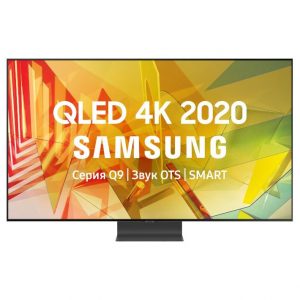
Another very affordable TV is the 2020 Samsung UE55TU7170U TV. The thickness of the top and side edges does not exceed 1 centimeter. The TV runs at an honest 4K resolution and 50Hz refresh rate. The TV supports proprietary anti-aliasing technology and HDR10, HLD, HDR10 +. The screen works on the basis of a VA-matrix, which has mediocre viewing angles, but demonstrates excellent contrast and low input lag, which will be especially noted by fans of computer games. The TV itself understands when the user connects gaming devices and changes picture modes according to the preset options.
Features:
- productive processor;
- high contrast;
- over a billion colors;
- well-developed game mode.
LG 55UN74006LA 55 ″ (2020)
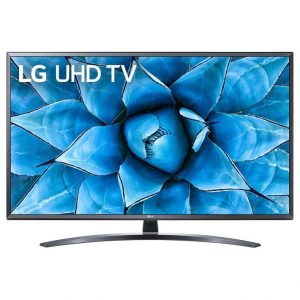
LG 55UN74006LA became the final representative of the rating of the best 55-inch TVs. It largely repeats the design of last year's predecessor, has a similar frame of 1 cm. The TV works on the basis of an IPS-matrix, which has a low contrast and mediocre black color. Thanks to IPS, the TV does not distort the picture at all viewing angles. The installed processor scales well the resolution of the reproduced content from any source.Even improving the picture from 480p to 4K is supported.
Features:
- high-quality image upscale;
- good viewing angles;
- mediocre contrast and shades of black.

